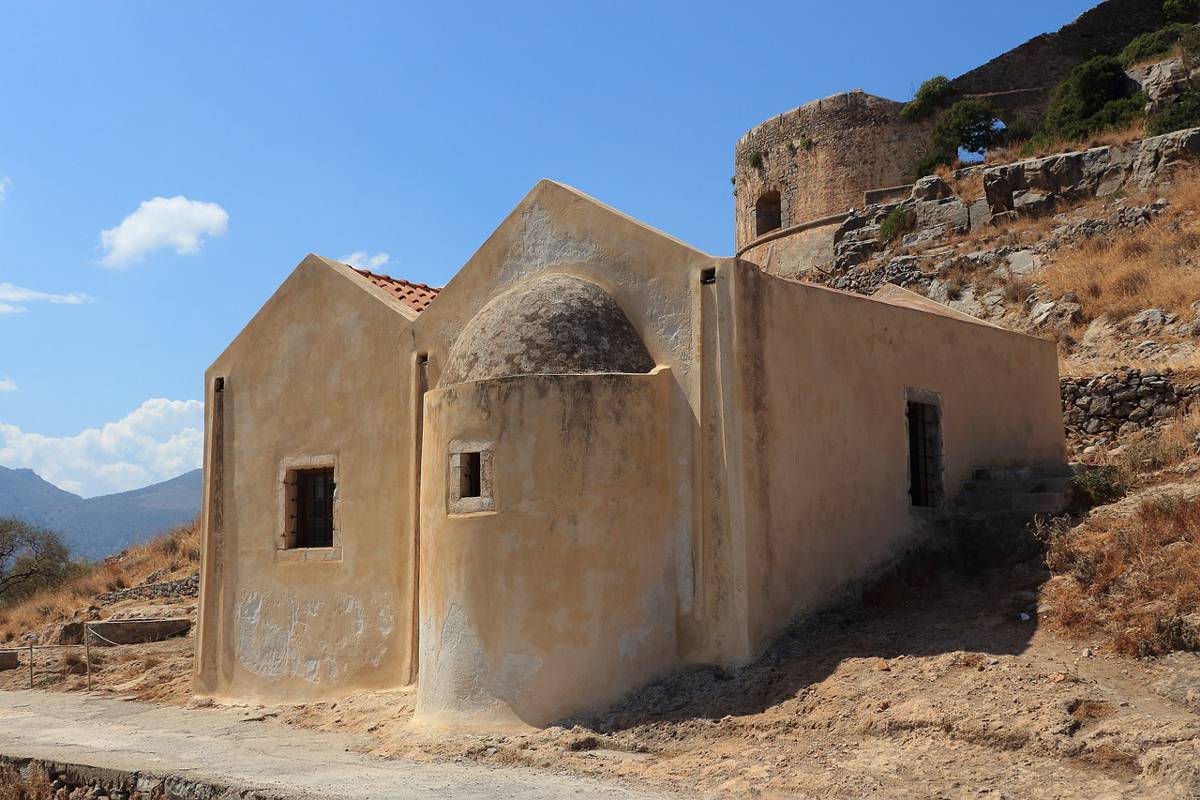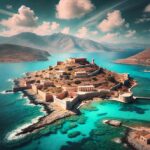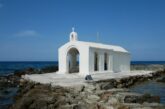From Plaka’s Pebbly Shores to Spinalonga’s Historic Depths
Nestled in the azure waters of the Mediterranean, Crete stands out not just for its sun-drenched beaches, but also for its captivating history and unspoiled charm. Among its many hidden treasures lies a unique journey from the tranquil village of Plaka to the haunting ruins of Spinalonga.
This is a journey where tales of resilience, history, and timeless beauty come together, offering visitors a glimpse into a world where the past and present seamlessly intertwine.
The Journey Begins in Heraklion
Landing in Heraklion during the early days of June, our adventure began with a seamless car rental experience, courtesy of GoMEGA, who greeted us with warm smiles. Opting for a rugged 4×4 Nissan Qashqai turned out to be a brilliant choice, as we were about to tackle the winding roads and diverse landscapes of Crete’s eastern coastline.
The anticipation of exploring ancient villages and hidden beaches set the perfect tone for our journey.
Our ultimate stop was the charming village of Plaka, located just five kilometres north of Elounda. With its laid-back atmosphere and stunning views of Spinalonga, Plaka served as the perfect base for our exploration.
A Warm Welcome in Plaka
The hospitality in Plaka is second to none. We were fortunate to stay at Athina Villas, where Manolis, our ever-enthusiastic host, went above and beyond to ensure our comfort. After greeting us at our car, Manolis not only showed us to our originally booked studio but surprised us with an upgrade to a spacious apartment with two balconies. The view from the front balcony was nothing short of mesmerising – a panorama of the deep blue sea with the imposing silhouette of Spinalonga rising in the distance. Manolis’s warm welcome and vast local knowledge set the stage for our stay in this tranquil village.
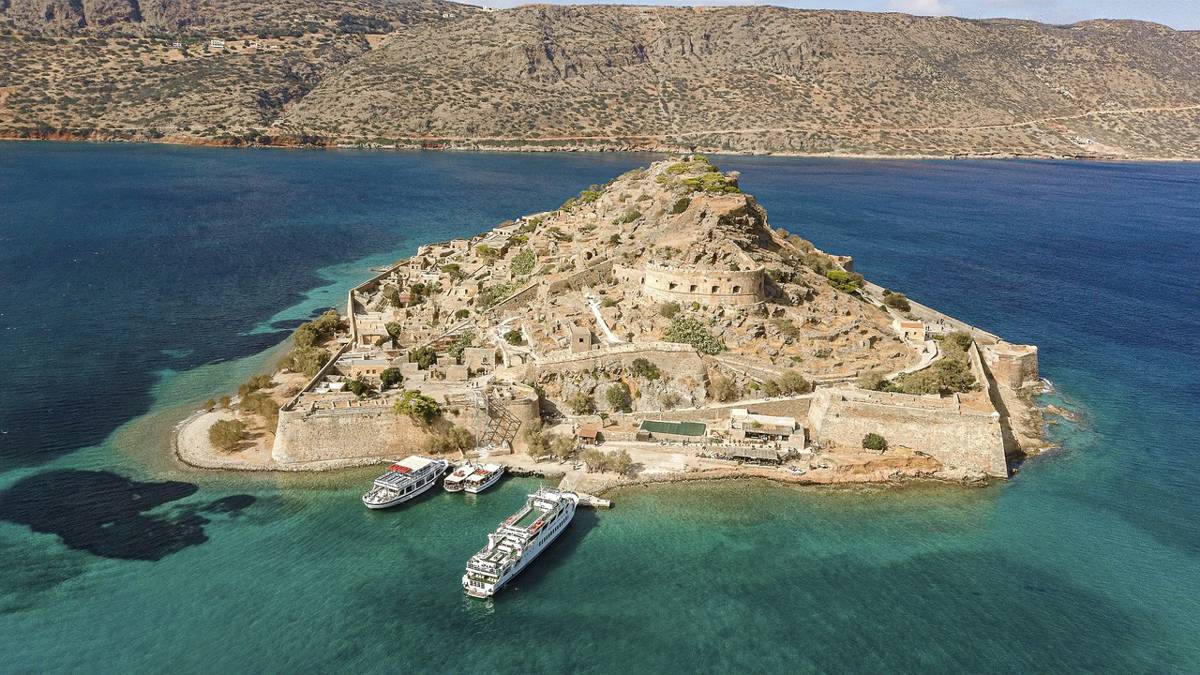
The Enigmatic Village of Plaka
Plaka, a once-sleepy fishing village, rose to fame with the publication of Victoria Hislop’s novel The Island, which was later adapted into a successful TV series. The novel painted vivid scenes of Spinalonga’s tragic history, intertwining it with local tales of love and loss.
This connection has cemented Plaka’s place in the hearts of those fascinated by both Crete’s dramatic history and its serene beauty.
Crystal Waters and Pebbly Shores
The village is blessed with pristine pebbly beaches, where the water shimmers under the sun. These beaches are perfect for those seeking peace away from crowded tourist spots. The southern beach, nestled near the Church of Agia Marina, is flanked by the luxurious Blue Palace Resort and offers water sports for the adventurous.
For those who prefer something more secluded, a tiny cove beneath Giorgos Fish Taverna provides an idyllic spot for a refreshing dip. The northern beach, however, steals the show. It’s the largest and most accessible, offering breath-taking views of Spinalonga across the bay, making it ideal for lazy afternoons soaking in the sun.
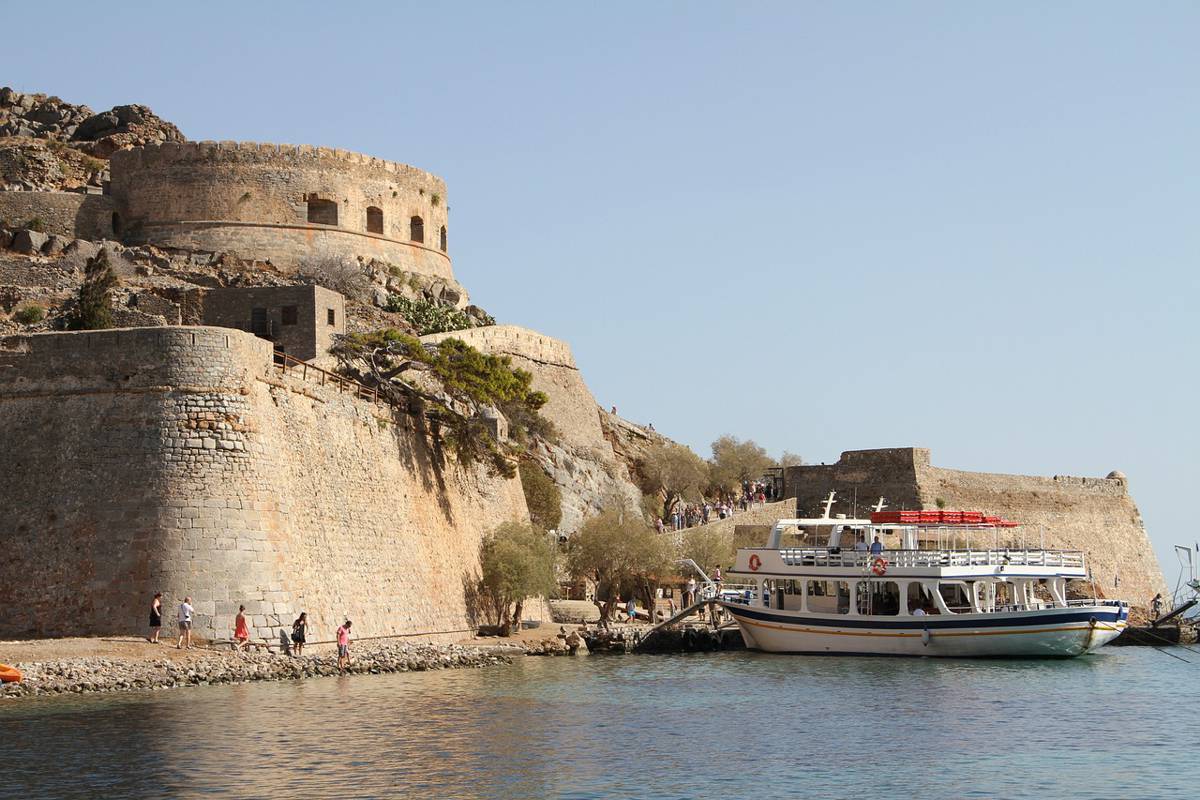
A Fortress Island with a Storied Past
Just a short boat ride away from Plaka lies Spinalonga, an island brimming with stories of human endurance and historical significance. Known by many names over the centuries—Kalidona, Spinalonga—the island’s past is as layered as its rocky terrain.
It has served various purposes throughout history: a strategic Venetian fortress, an Ottoman stronghold, and most famously, a leper colony.
The Venetian Legacy
Spinalonga’s Venetian history is deeply etched into its stones. In the 16th century, the Venetians fortified the island, erecting an imposing fortress to defend the Gulf of Elounda. The name “Spinalonga” likely originates from the Venetian phrase “spina lunga” (long thorn), a nod to its shape.
The fortress, armed with 35 cannons, stood as a formidable guardian against potential invaders, making it one of Crete’s most strategic defensive points.
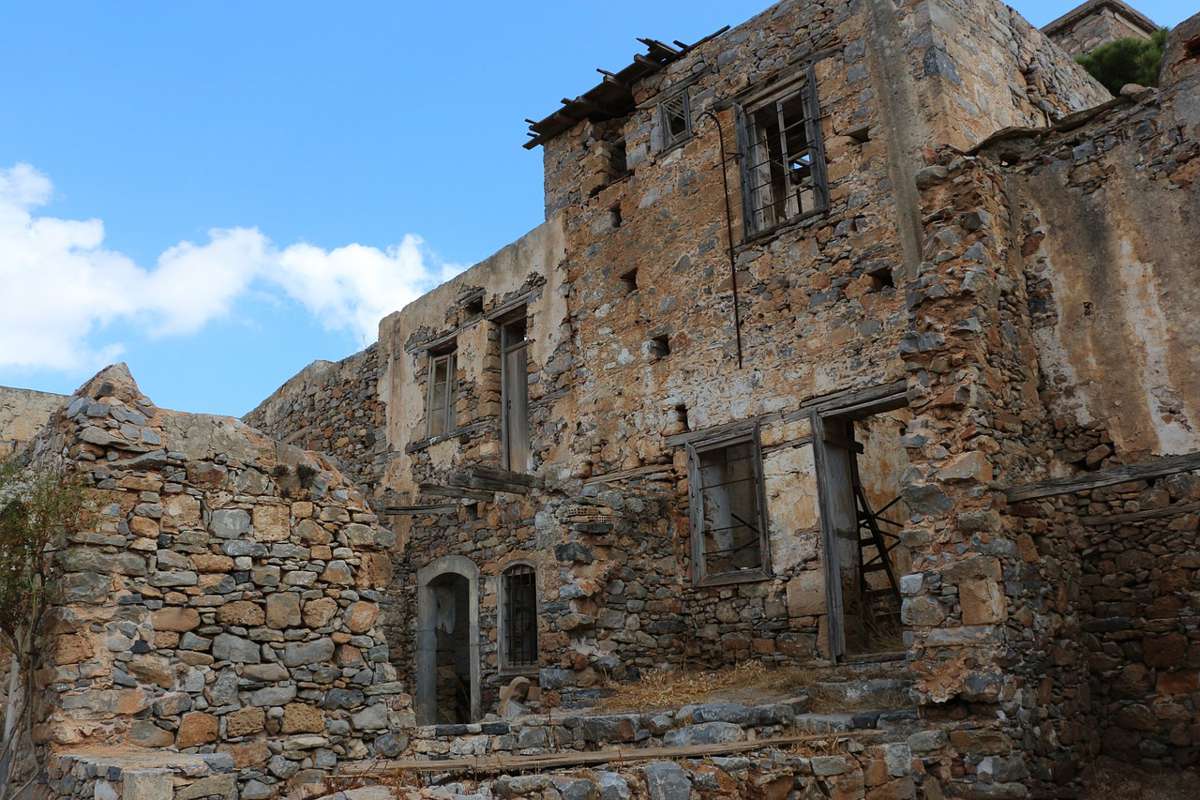
Ottoman Rule and Cretan Resistance
In 1715, Spinalonga succumbed to Ottoman rule, marking a turbulent chapter in its history. The island became one of the last Cretan territories to fall to the Turks, a symbol of the fierce resistance that characterised Crete’s long struggle for independence.
The remnants of Ottoman architecture still dot the landscape, a lasting reminder of the island’s multicultural heritage and the resilience of its people.
A Story of Isolation and Humanity
Spinalonga’s most poignant chapter began in 1904 when it was designated as a leper colony. For over half a century, the island was home to those afflicted by Hansen’s disease, isolated from the mainland in a desperate attempt to contain the spread.
Though initially marked by squalor and neglect, the colony evolved into a functioning community over time. Residents established businesses, formed unions, and even took part in strikes to demand better living conditions. Life on Spinalonga, though marred by suffering, was also characterised by moments of solidarity and hope—a testament to the resilience of the human spirit.
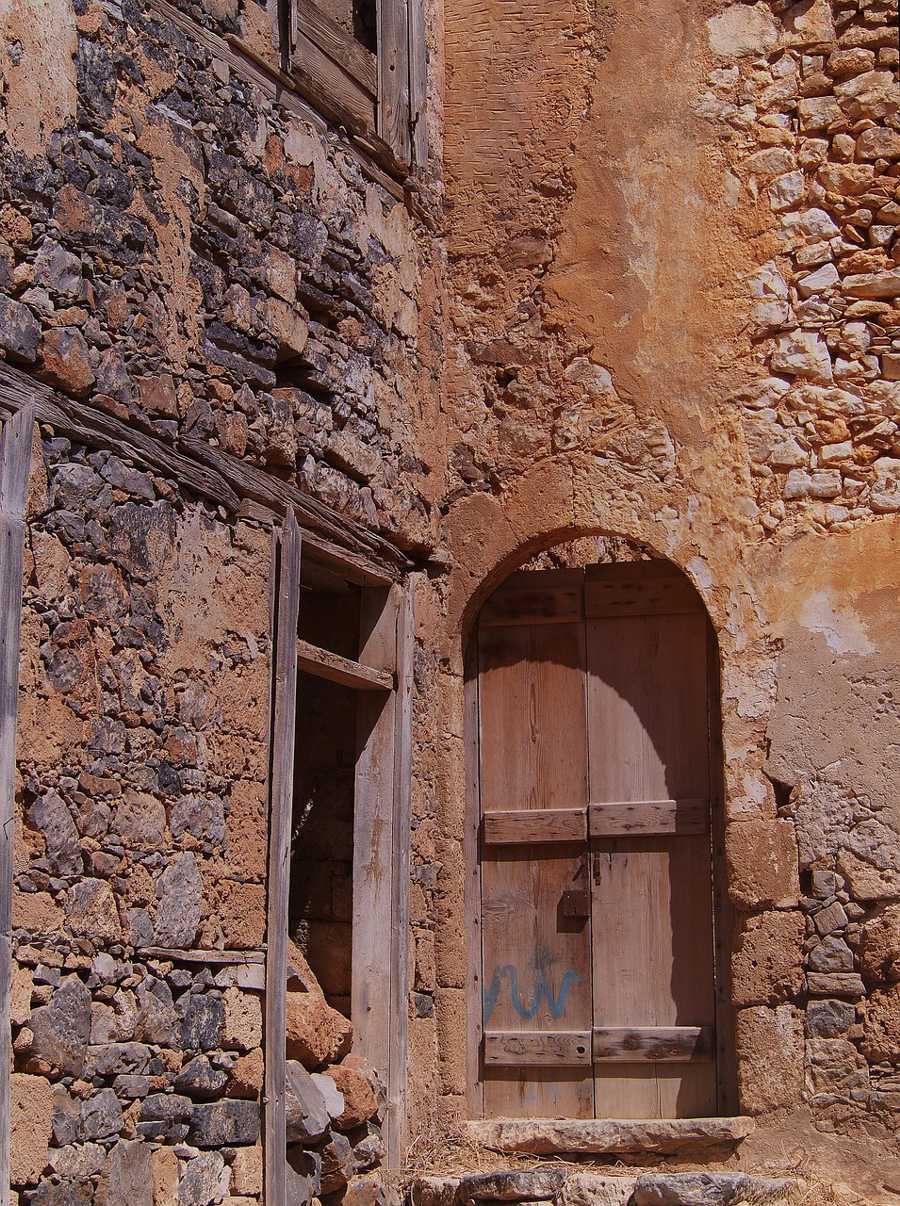
Stepping Back in Time
Today, Spinalonga is a living museum. Visitors can explore the well-preserved Venetian walls, stroll through the narrow lanes of the former leper community, and step into houses frozen in time. The island is a poignant reminder of the tragedies and triumphs of history.
With guided tours available, visitors can dive deep into the rich history of Spinalonga, understanding its significance not only as a fortress but also as a symbol of human endurance.
Practical Tips for Visiting Spinalonga
- Getting There: Boats to Spinalonga depart regularly from Plaka, Elounda, and Agios Nikolaos, with round-trip tickets being reasonably priced.
- When to Visit: Early morning or late afternoon is the best time to avoid the midday crowds and appreciate the island in a more serene setting.
- What to Bring: Comfortable shoes, a hat, and plenty of water are essential, especially in the summer months.

The Captivating Charm of Crete’s Eastern Coastline
Exploring the stretch from Plaka to Spinalonga offers a blend of culture, history, and natural beauty that’s hard to match. Beyond the historical allure, there are hidden gems such as authentic tavernas serving fresh seafood, quiet beaches perfect for relaxation, and hiking trails that lead to panoramic views of the island-studded coastline. F
or those keen on delving deeper into Crete’s culture, the nearby town of Elounda offers quaint streets, local markets, and a lively harbour scene.
A Journey Through Time and Beauty
This pocket of Crete, with its enchanting blend of past and present, offers more than just a holiday destination. It’s a journey through history, where every cobblestone, beach, and fortress tells a story.
From the tranquil village of Plaka to the haunting ruins of Spinalonga, visitors are treated to a unique experience—one that lingers long after the trip has ended. For history buffs, beach lovers, and adventurers alike, this part of Crete serves as a reminder of the island’s enduring spirit and timeless allure.
